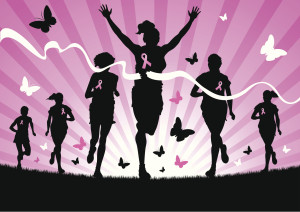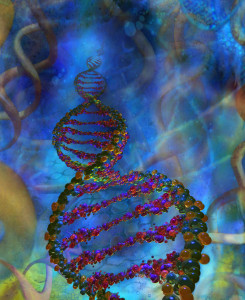 This week, the Florida Lung, Asthma and Sleep Specialists announced that October brings us National Breast Cancer Awareness Month in a flutter of fall leaves and pink ribbons. This month you will see walks, races, baked goods, and any number of ingenious fundraisers for breast cancer awareness, research and advocacy.
This week, the Florida Lung, Asthma and Sleep Specialists announced that October brings us National Breast Cancer Awareness Month in a flutter of fall leaves and pink ribbons. This month you will see walks, races, baked goods, and any number of ingenious fundraisers for breast cancer awareness, research and advocacy.
Pink Ribbons Mean We Care!
In communities across America, October brings all of us the opportunity to “raise awareness about the importance of early detection of breast cancer.” FLASS hopes you will help to make a difference.
If you can not run in a race or contribute money, perhaps you can contribute time to a community Breast Cancer Awareness event. Even if you only wear a tiny ribbon, you are helping spread the word about breast cancer awareness.
A Few Well Chosen Statistics!
 Blogs such as this one bring you basic facts like: 200,000 women in the U.S. will be diagnosed with invasive breast cancer, this year and 40,000 of them will die.
Blogs such as this one bring you basic facts like: 200,000 women in the U.S. will be diagnosed with invasive breast cancer, this year and 40,000 of them will die.
We also bring you good news: There are 2.5 million breast cancer survivors alive this year.
Why are there so many? FLASS believes detection has improved. Treatments have evolved. Pink public awareness works.
We are proud to report that, since 1990, “we have seen a gradual reduction in female breast cancer incidence rates among women aged 50 and older.”
You have probably have heard that “death rates from breast cancer have been declining due to better screening and early detection, increased awareness, and continually improving treatment options.”
Bringing Out a New Kind of Awareness
However, whereas breast cancer statistics are looking better, lung cancer statistics are not. Lung cancer now kills twice as many women as any  other type of cancer.
other type of cancer.
Public awareness at this point, has familiarized us with BRCA1 and BRCA2 mutations. In simple words, these are those “faulty gene copies that can raise your risk of breast and ovarian cancer.”
However, did you know BRCA1 and BRCA2 mutations can put you at risk for more than breast and ovarian cancer?
Recent studies have proven these same mutations, “are also associated with male breast cancer, prostate cancer, melanoma, and pancreatic cancer.” New publications in the Nature Genetics journal have proven that one special BRCA2 mutation may increase your risks, not only for breast cancer but also for lung cancer.
In the above mentioned study, researchers studied 11,348 cases of lung cancer and compared those people’s genotypes to the genotypes of 15,861 without the disease.
One BRCA2 mutation, “which a little less than two percent of people with European ancestry carry—increases a person’s risk of developing lung cancer by about 80 percent, said senior author Chris Amos, Ph.D., director of the Center for Genomic Medicine at Dartmouth.
He added, “And your risk for a sub-type of lung cancer called squamous lung cancer is 2.5 times higher if you carry that variant.”
So, if you have genetic risks involving BRCA1 and 2, scientists are beginning to believe you are at risk for both lung cancer as well as breast cancer, and other types of cancer as well. So, our pink ribbons celebrate a new dimension in breast cancer awareness. We spread awareness of more than cancer in the breasts, we also raise cancer awareness for the lungs in your chests.
In summary, for the doctors and staff of FLASS, the new genetic study means October should signal a double awareness: Cancer is a risk to both breasts and chests (lungs!)

